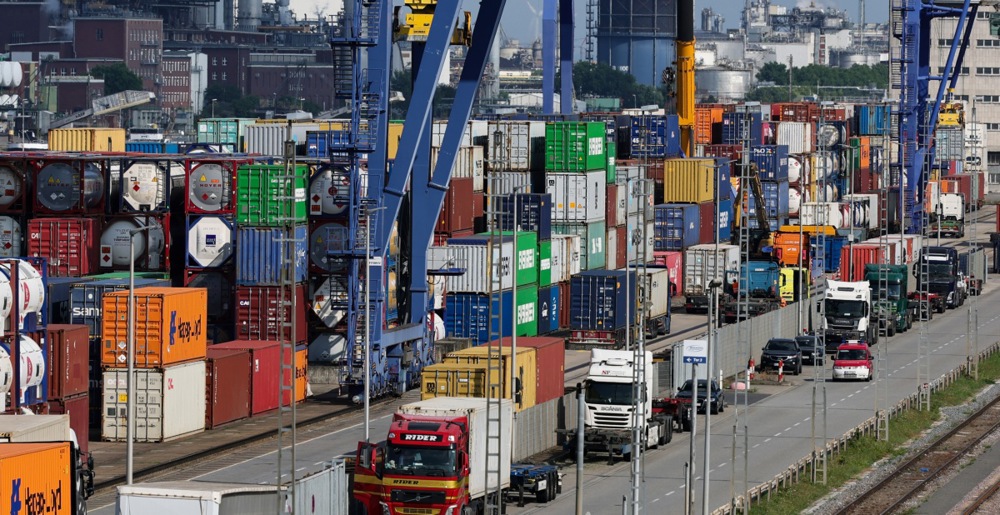The US has expanded natural gas exports through trade negotiations while applying parallel pressure on Russian energy flows — a dual strategy that has shifted global markets and tested alliances.
While sanctions have been squeezing out Russian oil in all but name, Washington has secured new energy markets through parallel trade agreements, making US liquefied natural gas (LNG) almost a default option for countries looking to fill the gap.
“India said they would start taking US oil. It will hit Russia but on the other hand they may divert the cargoes to other buyers,” said Aura Sabadus, an energy analyst at London-based Independent Commodity Intelligence Services, in an interview with Brussels Signal on August 5.
“The EU does not buy Russian oil except for Hungary and Slovakia which take it via a pipeline.”
That pipeline exception remained the last open channel for direct Russian oil imports into the European Union, after the bloc’s latest sanctions package targeted refined products made from Russian crude, even when processed outside Russia, Sabadus said.
“Import ban on refined oil products derived from Russian crude: This means a clampdown on refined product imports made from Russian crude that are processed abroad and delivered into the EU,” the European Commission wrote right after adopting the measures on July 18.
“This will prevent Russian crude oil from reaching the EU market in any form,” the EC said.
The rules were designed to close loopholes used by third countries to repackage Russian-origin oil and ship it into Europe undetected. The new restrictions came just days after a broader US-led push to redirect global flows.
In Asia, India has signalled it will start taking oil from the US, a move that publicly distanced it from Moscow and gave Washington a symbolic win, even as Russian barrels were expected to find new destinations.
Sabadus cautioned that, while the announcement hurt Russia diplomatically, it did not guarantee a loss in sales.
India said recently both the EU and the US were “targeting” it due to its buying of Russian oil, adding that the moves were “unjustified” and that it would protect its interests.
Meanwhile, Malaysia has signed a much deeper economic package with the US that binds energy and industrial policy to tariffs.
The country would spend $3.4 billion (€2.9 billion) per year on US LNG and commit up to $70 billion (€60.6 billion) in cross-border investments over five years, its trade minister said on 4 August.
That came just after Washington reduced a proposed 25 per cent tariff on Malaysian goods down to 19 per cent, now set to take effect on August 8.
The full agreement also includes up to $150 billion (€130 billion) in purchases of US-made equipment for Malaysia’s semiconductor, aerospace and data centre sectors, all part of the same framework.
The recently struck EU-US trade deal included a commitment to purchase large volumes of US LNG.
“We will also increase our energy co-operation. Purchases of US energy products will diversify our sources of supply and contribute to Europe’s energy security,” the EC wrote of the deal signed on July 27.
“We will replace Russian gas and oil with significant purchases of US LNG, oil and nuclear fuels.”
The US White House confirmed the scale of the agreement the next day, stating: “The deal bolsters America’s economy and manufacturing capabilities. The EU will purchase $750 billion [€650.1 billion] in US energy and make new investments of $600 billion [€520.1 billion] in the United States, all by 2028.”
Concrete details on contract terms, timelines, or delivery volumes beyond the headline commitments, though are still unclear, leaving room for negotiations.
Thus far, the EU seemed to be waiting on the US to decide what might happen. More recently, the bloc officially delayed the automatic retaliation to the US tariffs that was supposed to kick off if no deal were reached.
The EU is already the largest market for US LNG. Volumes have surged since 2022, when the bloc began cutting Russian imports following the invasion of Ukraine. New terminals in Germany, the Netherlands and France were built or expanded at record speed.
Brussels, though, has grown uneasy over the pace and scale of US supply dominance.
A study published by the Institute for Energy Economics and Financial Analysis soon after the US-EU trade deal warned that the bloc risks over-reliance on a single gas provider.
“Deja vu: EU risks over-reliance on one gas supplier,” the report was titled.
The concern mirrored past debates over Russian gas in the pre-war years, when low-cost pipeline flows became politically sensitive and, eventually, unsustainable.
EU countries are now watching US energy volumes rise under similarly apparently lopsided conditions, without long-term price protections and outside of formal legislative frameworks.
Even so, US energy traders and officials have continued to benefit from the fallout of Russia’s sanctions squeeze.
The EU’s 18th package, agreed on July 18, shut off indirect refined oil flows from Russian crude. That included fuel refined in countries including India, the UAE and Turkey using Russian oil, even if the final product no longer appeared Russian on paper.
While Hungary and Slovakia have continued to receive Russian oil via pipeline under earlier exemptions, other EU member states have been forced at least to say they will look elsewhere.





